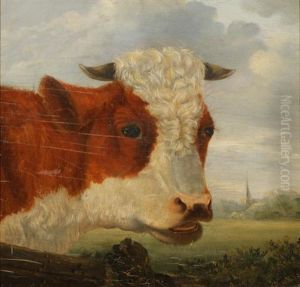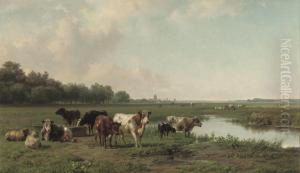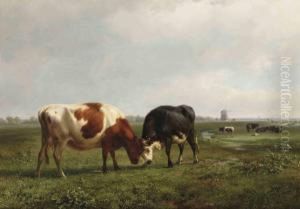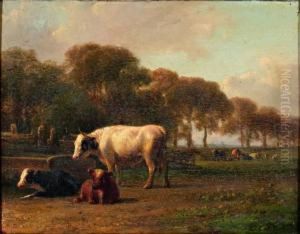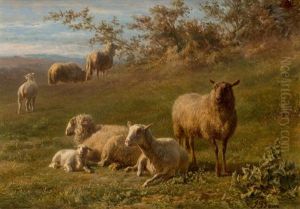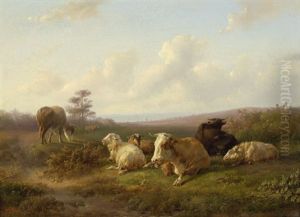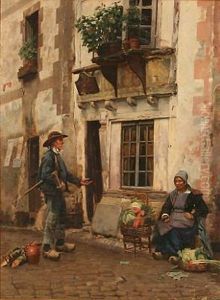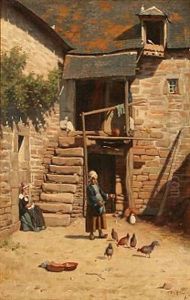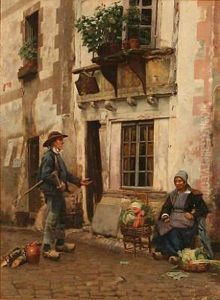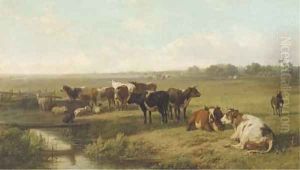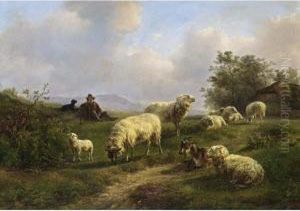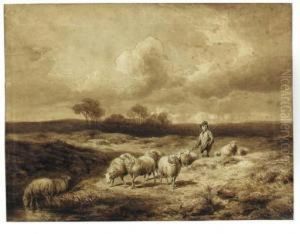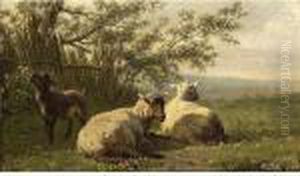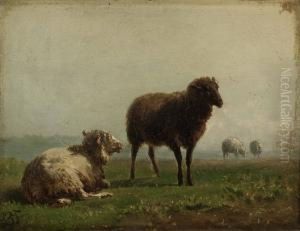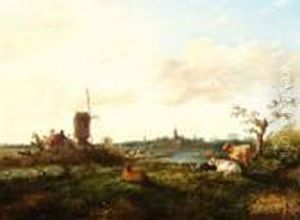Jan Bedijs Tom Paintings
Jan Bedijs Tom was a Dutch painter and graphic artist whose work is often associated with the Expressionist movement, although his style also incorporated elements of Art Deco and other artistic trends of the early 20th century. Born on February 9, 1899, in The Hague, Netherlands, Tom showed an early interest in art and began his studies at the Royal Academy of Art in The Hague. His early work was influenced by the Amsterdam School and the decorative styles prevalent in the 1920s.
During the 1920s and 1930s, Jan Bedijs Tom developed his distinct style, characterized by bold colors, dynamic compositions, and a certain degree of abstraction. He was particularly skilled in the use of woodcut and lithography, which allowed him to explore graphic contrasts and textural effects in his prints. His subject matter varied from landscapes and cityscapes to portraits and still lifes, often with a strong narrative element.
Tom's career was interrupted by World War II, during which time the Netherlands was occupied by Nazi Germany. The war years were difficult for many artists, and Tom was no exception. However, he continued to work when he could, and after the war, he experienced a renewed period of creativity.
In the post-war years, Jan Bedijs Tom became more involved in public art projects and his work was increasingly recognized both in the Netherlands and internationally. He participated in numerous exhibitions and received several awards for his contribution to Dutch art. His legacy includes not only his paintings and prints but also his influence on younger artists whom he inspired through his teaching and mentorship.
Jan Bedijs Tom passed away on July 7, 1978, leaving behind a body of work that continues to be appreciated for its vibrancy, emotional intensity, and artistic innovation. His art is represented in various public collections, including museums in the Netherlands and abroad, and remains an important part of Dutch artistic heritage.
